Table of Contents
3
Democracy and Diversity
Overview
 In the last chapter, we saw how power can be distributed to accommodate linguistic and regional diversities. But language and region are not the only features that give a distinct identity to people. Sometimes, people also identify themselves and relate with others on the basis of their physical appearance, class, religion, gender, caste, tribe, etc. In this chapter, we study how democracy responds to social differences, divisions and inequalities. We begin with an example of public expression of social divisions. We then draw some general lessons about how social differences can take various forms. We then turn to how democratic politics affects and is affected by these social diversities.
In the last chapter, we saw how power can be distributed to accommodate linguistic and regional diversities. But language and region are not the only features that give a distinct identity to people. Sometimes, people also identify themselves and relate with others on the basis of their physical appearance, class, religion, gender, caste, tribe, etc. In this chapter, we study how democracy responds to social differences, divisions and inequalities. We begin with an example of public expression of social divisions. We then draw some general lessons about how social differences can take various forms. We then turn to how democratic politics affects and is affected by these social diversities.A Story from Mexico Olympics

The pictures on this page depict an important landmark in the history of the Civil Rights Movement in the United States.

Civil Rights Movement in the USA (1954-1968) refers to a set of events and reform movements aimed at abolishing legal racial discrimination against African-Americans. Led by Martin Luther King Jr., this movement practiced non-violent methods of civil disobedience against racially discriminatory laws and practices.
African-American, Afro-American, Black American, or Black are the terms used to refer mainly to the descendants of Africans who were brought into America as slaves between the 17th century and early 19th century.
The Black Power movement emerged in 1966 and lasted till 1975, which was a more militant anti-racist movement, advocating even violence if necessary to end racism in the US.
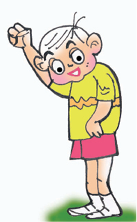
Do you think that Carlos and Smith should have raised an internal matter of American society in an international forum? Would you say that what they did was political? Why do you think Peter Norman, who was neither Black nor American, joined in the gesture of protest? If you were in Norman’s place what would you do?
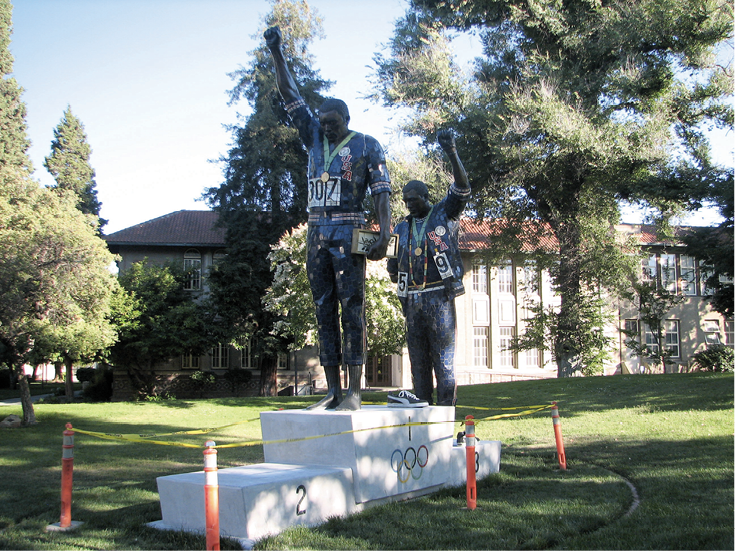
© wikipedia & photo flickr.com Kevin
The International Olympic Association held Carlos and Smith guilty of violating the Olympic spirit by making a political statement. Their medals were taken back. Back home, they were subjected to a lot of criticism. Norman too suffered for his action and was not included in the Australian team for the next Olympic. But their action succeeded in gaining international attention for the Civil Rights Movement in the US. Recently, the San Jose (pronounced ‘Saan Hoze’) State University, of which they were former students, honoured them and installed their statue in the University campus. When Norman died in 2006, Smith and Carlos were pallbearers at his funeral.

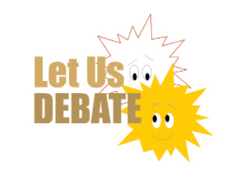
Some Dalit groups decided to participate in the UN Conference Against Racism in Durban in 2001, demanding the inclusion of caste in the agenda of this conference. Here are three reactions to this move:
Amandeep Kaur (a government official): Our Constitution declares caste discrimination to be illegal. If some caste discrimination continues, it is an internal matter. I am opposed to this being raised in an international forum.
Oinam (a sociologist): I am opposed to this because caste and race are not similar divisions. Caste is a social division, while race is a biological one. Raising caste in this conference on racism would mean equating the two.
Ashok (a Dalit activist): The argument about internal matter is a way of preventing open discussion of oppression and discrimination. Race is not purely biological. It is as much a legal and sociological category as caste. Caste discrimination must be raised in this conference.
Which of the three opinions do you agree with most and why?

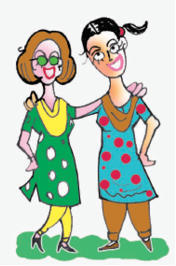
I met this group of girls from Pakistan and felt that I had more in common with them than many girls from other parts of my own country. Is this anti-national to feel so?
Differences, similarities, divisions
The athletes in the example above were responding to social divisions and social inequalities. But does that happen only in societies which have racial divisions? In the previous two chapters we have already noted some other forms of social divisions. The examples of Belgium and Sri Lanka show both regional and social divisions. In the case of Belgium we noted that people who live in different regions speak different languages. In Sri Lanka, we noted linguistic as well as religious differences. Thus social diversity can take different forms in different societies.
These social differences are mostly based on accident of birth. Normally we don’t choose to belong to our community. We belong to it simply because we were born into it. We all experience social differences based on accident of birth in our everyday lives. People around us are male or female, they are tall and short, have different kinds of complexions, or have different physical abilities or disabilities. But all kinds of social differences are not based on accident of birth. Some of the differences are based on our choices. For example, some people are atheists. They don’t believe in God or any religion. Some people choose to follow a religion other than the one in which they were born. Most of us choose what to study, which occupation to take up and which games or cultural activities to take part in. All these lead to formation of social groups that are based on our choices.
Every social difference does not lead to social division. Social differences divide similar people from one another, but they also unite very different people. People belonging to different social groups share differences and similarities cutting across the boundaries of their groups. In the instance above, Carlos and Smith were similar in one way (both were African-American) and thus different from Norman who was white. But they were also all similar in other ways – they were all athletes who stood against racial discrimination.
© Ares - Cagle Cartoons Inc.
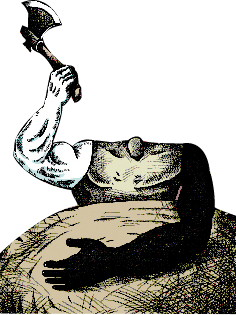
A cartoon like this can be read by different people to mean different things. What does this cartoon mean to you? How do other students in your class read this?
It is fairly common for people belonging to the same religion to feel that they do not belong to the same community, because their caste or sect is very different. It is also possible for people from different religions to have the same caste and feel close to each other. Rich and poor persons from the same family often do not keep close relations with each other for they feel they are very different. Thus, we all have more than one identity and can belong to more than one social group. We have different identities in different contexts.
Overlapping and cross-cutting differences
Social division takes place when some social difference overlaps with other differences. The difference between the Blacks and Whites becomes a social division in the US because the Blacks tend to be poor, homeless and discriminated against. In our country Dalits tend to be poor and landless. They often face discrimination and injustice. Situations of this kind produce social divisions, when one kind of social difference becomes more important than the other and people start feeling that they belong to different communities.
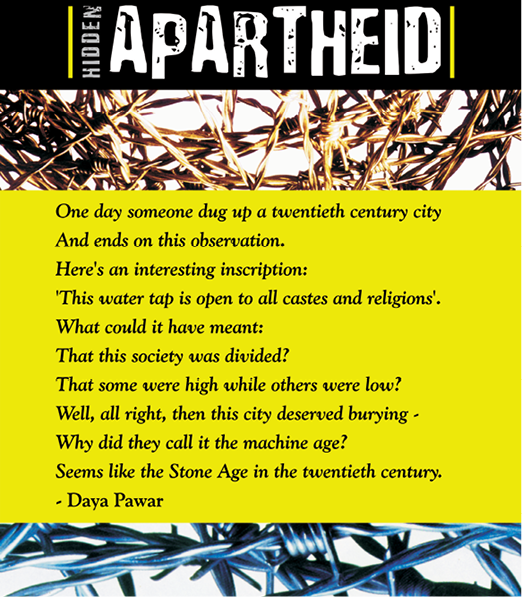
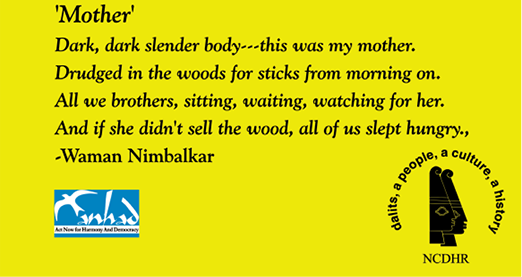
Read these two poems by Dalit writers. Why do you think the poster is titled ‘Hidden Apartheid’ ?
If social differences cross cut one another, it is difficult to pit one group of people against the other. It means that groups that share a common interest on one issue are likely to be in different sides on a different issue. Consider the cases of Northern Ireland and the Netherlands. Both are predominantly Christian but divided between Catholics and Protestants. In Northern Ireland, class and religion overlap with each other. If you are Catholic, you are also more likely to be poor, and you may have suffered a history of discrimination. In the Netherlands, class and religion tend to cut across each other. Catholics and Protestants are about equally likely to be poor or rich. The result is that Catholics and Protestants have had conflicts in Northern Ireland, while they do not do so in the Netherlands. Overlapping social differences create possibilities of deep social divisions and tensions. Cross-cutting social differences are easier to accommodate.
Social divisions of one kind or another exist in most countries. It does not matter whether the country is small or big. India is a vast country with many communities. Belgium is a small country with many communities. Even those countries such as Germany and Sweden, that were once highly homogeneous, are undergoing rapid change with influx of people from other parts of the world. Migrants bring with them their own culture and tend to form a different social community. In this sense most countries of the world are multi-cultural.

 Homogeneous society: A society that has similar kinds of people, especially where there are no significant ethnic differences.
Homogeneous society: A society that has similar kinds of people, especially where there are no significant ethnic differences.Migrant: Anybody who shifts from one region or country to another region within a country or to another country, usually for work or other economic opportunities.



Politics of social divisions
How do these social divisions affect politics? What does politics do to these social divisions? At first sight, it would appear that the combination of politics and social divisions is very dangerous and explosive. Democracy involves competition among various political parties. Their competition tends to divide any society. If they start competing in terms of some existing social divisions, it can make social divisions into political divisions and lead to conflict, violence or even disintegration of a country. This has happened in many countries.
Range of outcomes
Take the case of Northern Ireland that we referred to above. This region of the United Kingdom has been for many years the site of a violent and bitter ethno-political conflict. Its population is divided into two major sects of Christianity: 53 per cent are Protestants, while 44 per cent are Roman Catholics. The Catholics were represented by Nationalist parties who demanded that Northern Ireland be unified with the Republic of Ireland, a predominantly Catholic country. The Protestants were represented by Unionists who wanted to remain with the UK, which is predominantly protestant. Hundreds of civilians, militants and security forces were killed in the fight between Unionists and Nationalists and between the security forces of the UK and the Nationalists. It was only in 1998, that the UK government and the Nationalists reached a peace treaty after which the latter suspended their armed struggle. In Yugoslavia, the story did not have a happy ending. Political competition along religious ending ethnic lines led to the disintegration of Yugoslavia into six independent countries.
Bulgaria, Romania or India?
Ganesh had come back from his trip and was talking to Mahashweta about the Roma people who live in many countries of Eastern Europe. He met Yordanka who works as a nurse in Bulgaria. This is what she has to say about Roma people:
“Being a nurse you can’t refuse to look after some people, but these Roma people are very dirty. Even when something small happens to any one in their family, all the family and even the neighbours just march to our hospital. And once they are in the hospital they don’t know how to keep quiet. They talk aloud, smoke and drop ashes all over and spit on the wall! They have no patience, and they just start pestering our doctors! And when they are just hanging out like that any way they look so aggressive. After all these dark skinned people don’t look like us. They have a strange sense of colour. Look at their dress, why can’t they try to look like everyone else in the country? And we all know they are thieves. I have heard people say that these Roma people live by selling their blood. None of them can afford the hospital fees. But when they are ill they just rush to hospital at the cost of good Bulgarians who pay their taxes!”
“That sounds familiar’ said Mahashweta.
Ganesh went on to talk about Modruzeni, a Romani who lives in Romania. When she was eighteen years old, she went to the hospital, to give birth to her first child. She had no money to pay to the doctor or nurse. Though she was in the hospital, nobody bothered to come and take care of her. Finally the sweeper, who was also a Romani, helped her give birth to a boy. And then the nurse appeared on the scene and said, “Here we have another criminal”. Talking about how the Roma people are treated in public hospitals, she says: “These doctors keep us waiting outside their cabins. On one occasion one doctor asked me to take a bath if I needed to be examined! Of course, I smelled. During the pregnancy I ate from the garbage containers, because I was so hungry all the time. My husband had left me. I had two children, and I was pregnant with the third.
The social worker refused my request for food assistance. My neighbour helped me to deliver the baby. I often feel it is better not to visit these hospitals.”
Mahashweta heard him out and said, “Ganesh, why do you have to travel halfway across the world to find this out? This is not a story about Romania and Bulgaria or about the Roma people. This is as much a story about our own country and about our people who are branded as criminals by our system.”
Do you think Mahashweta is right? Do you know of some community in your area that is treated like the Romas?
Have you heard people say things similar to what Yordanka or Modruzeni say here? If yes, try to think of what the story would sound like if you heard it from the other side?

Do you think the Bulgarian government should try to ensure that the Roma people dress and behave like other people from Bulgaria?
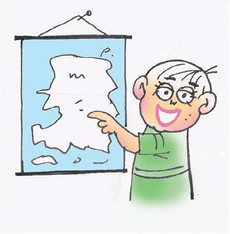
So, it happens all over the world, even in Europe! I thought it was only in countries like India that we have social divisions.
Such examples lead some people to conclude that politics and social divisions must not be allowed to mix. They think that it would be best if there are no social divisions in any country. If social divisions do exist in a country, they must never be expressed in politics.
At the same time every expression of social divisions in politics does not lead to such disasters. We have already seen that social divisions of one kind or another exist in most countries of the world. Wherever they exist, these divisions are reflected in politics. In a democracy it is only natural that political parties would talk about these divisions, make different promises to different communities, look after due representation of various communities and make policies to redress the grievances of the disadvantaged communities. Social divisions affect voting in most countries. People from one community tend to prefer some party more than others. In many countries there are parties that focus only on one community. Yet all this does not lead to disintegration of the country.
Three determinants
Three factors are crucial in deciding the outcome of politics of social divisions. First of all, the outcome depends on how people perceive their identities. If people see their identities in singular and exclusive terms, it becomes very difficult to accommodate. As long as people in Northern Ireland saw themselves as only Catholic or Protestant, their differences were difficult to reconcile. It is much easier if the people see that their identities are multiple and are complementary with the national identity. A majority of Belgians now feel that they are as much Belgian as they are Dutch or German-speaking. This helps them to stay together. This is how most people in our country see their identity: they think of themselves as Indian as well as belonging to a state or a language group or a social or religious community.
© Orion / Juska Rantanen flickr.com
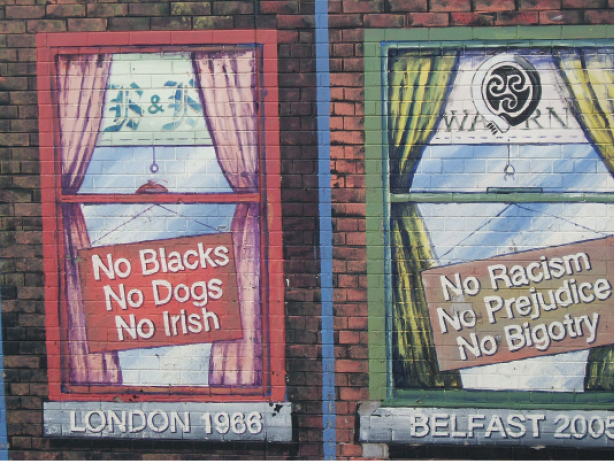
In some societies of Northern Ireland, the colonies of Protestant and Catholic communities are divided by walls. These walls are sometimes filled with graffiti as you can see here. The Irish Republican Army and British Government signed an agreement in 2005. What does the graffiti here tell about the conflict in the society?
Second, it depends on how political leaders raise the demands of any community. It is easier to accommodate demands that are within the constitutional framework and are not at the cost of another community. The demand for ‘only Sinhala’ was at the cost of the interest and identity of the Tamil community in Sri Lanka. In Yugoslavia, the leaders of different ethnic communities presented their demands in such a way that these could not be accommodated within a single country.
Third, it depends on how the government reacts to demands of different groups. As we saw in the examples of Belgium and Sri Lanka, if the rulers are willing to share power and accommodate the reasonable demands of minority community, social divisions become less threatening for the country. But if they try to suppress such a demand in the name of national unity, the end result is often quite the opposite. Such attempts at forced integration often sow the seeds of disintegration.
Thus the assertion of social diversities in a country need not be seen as a source of danger. In a democracy, political expression of social divisions is very normal and can be healthy. This allows various disadvantaged and marginal social groups to express their grievances and get the government to attend to these. Expression of various kinds of social divisions in politics often results in their cancelling one another out and thus reducing their intensity. This leads to strengthening of a democracy.
© Dario Castillejos - Cagle Cartoons Inc.
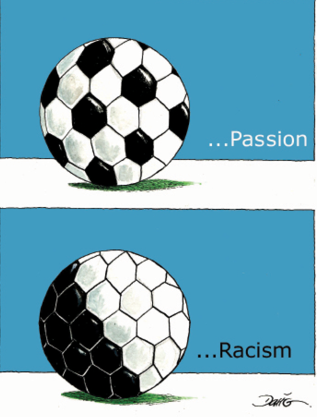
![chap%203-8.jpg]() So, you are saying that too many small divisions are better than a single big division? Are you also saying that politics is a force of unity?
So, you are saying that too many small divisions are better than a single big division? Are you also saying that politics is a force of unity?
But a positive attitude towards diversity and a willingness to accommodate it do not come about easily. People who feel marginalised, deprived and discriminated have to fight against the injustices. Such a fight often takes the democratic path, voicing their demands in a peaceful and constitutional manner and seeking a fair position through elections. Sometimes social differences can take the form of unacceptable level of social inequality and injustice. The struggle against such inequalities sometimes takes the path of violence and defiance of state power. However history shows that democracy is the best way to fight for recognition and also to accommodate diversity.

Exercise
1. Discuss three factors that determine the outcomes of politics of social divisions.
2. When does a social difference become a social division?
3. How do social divisions affect politics? Give two examples.
4. ________________ social differences create possibilities of deep social divisions and tensions. ___________________ social differences do not usually lead to conflicts.
5. In dealing with social divisions which one of the following statements is NOT correct about democracy?
(a) Due to political competition in a democracy, social divisions get reflected in politics.
(b) In a democracy it is possible for communities to voice their grievances in a peaceful manner.
(c) Democracy is the best way to accommodate social diversity.
(d) Democracy always leads to disintegration of society on the basis of social divisions.
6. Consider the following three statements.
A. Social divisions take place when social differences overlap.
B. It is possible that a person can have multiple identities.
C. Social divisions exist in only big countries like India.
Which of the statements is/are correct?
(a) A, B and C (b) A and B (c) B and C (d) Only C
7. Arrange the following statements in a logical sequence and select the right answers by using the code given below.
A. But all political expression of social divisions need not be always dangerous.
B. Social divisions of one kind or the other exist in most countries.
C. Parties try to win political support by appealing to social divisions.
D. Some social differences may result in social divisions.
(a) D, B, C, A (b) D, B, A, C (c) D, A, C, B (d) A, B, C, D
8. Among the following, which country suffered disintegration due to political fights on the basis of religious and ethnic identities?
(a) Belgium (b) India (c) Yugoslavia (d) Netherlands
9. Read the following passage from a famous speech by Martin Luther King Jr. in 1963. Which social division is he talking about? What are his aspirations and anxieties? Do you see a relationship between this speech and the incident in Mexico Olympics mentioned in this chapter?
“I have a dream that my four little children will one day live in a nation where they will not be judged by the colour of their skin but by the content of their character. Let freedom ring. And when this happens, and when we allow freedom ring—when we let it ring from every village and every hamlet, from every state and every city, we will be able to speed up that day when all of God’s children—black men and white men, Jews and Gentiles, Protestants and Catholics—will be able to join hands and sing in the words of the old Negro spiritual: ‘Free at last! Free at last! Thank God Almighty, we are free at last!’ I have a dream that one day this nation will rise up and live out the true meaning of its creed: ‘We hold these truths to be self-evident: that all men are created equal’.”
 So, you are saying that too many small divisions are better than a single big division? Are you also saying that politics is a force of unity?
So, you are saying that too many small divisions are better than a single big division? Are you also saying that politics is a force of unity?